Turning an idea into a real product seems hard. Many steps can confuse you. We at CKMOLD make this journey clear and simple for you.
CKMOLD helps create many plastic products. We guide you from your first idea, through designing the part and mold, to making the final product. We make sure everything works well together.
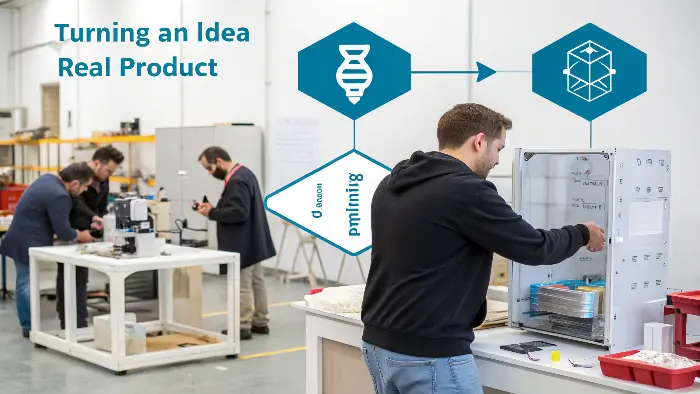
You might wonder how this all works. It’s a fascinating process with many important steps. Let’s look closer at how we bring your ideas to life using injection molding. Keep reading to learn more.
What is the concept of injection molding?
You hear "injection molding" but don’t know what it is. This makes it hard to see how your product is made. Let me explain this key manufacturing method.
Injection molding is a way to make many plastic parts. We melt plastic and push it into a mold. The plastic cools and hardens into the shape of the mold.
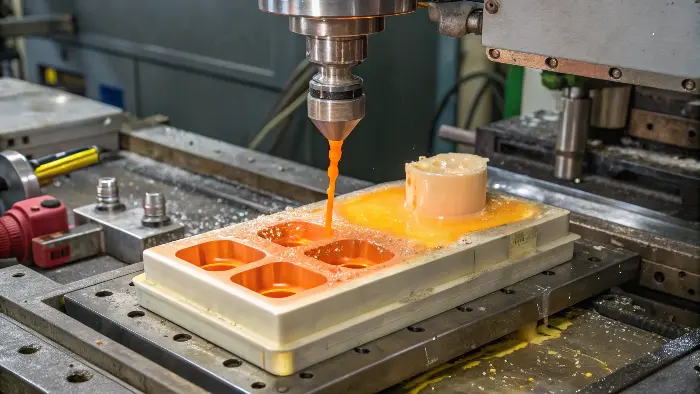
Injection molding is a very popular way to make things from plastic. Think about many plastic items you use every day. Many of them are made this way. The basic idea is simple. We take small plastic pellets. We heat them until they melt into a liquid. Then, we use high pressure to inject this liquid plastic into a specially made metal mold. Inside the mold, there is a cavity. This cavity has the exact shape of the part we want to make. The hot plastic fills this cavity. Then, we cool the mold. As it cools, the plastic becomes solid again. It takes the shape of the cavity. Finally, we open the mold and take out the finished part. This process can be repeated many, many times. This is why it’s great for making lots of identical parts quickly. I remember when I first saw an injection molding machine in action. It was amazing to see raw plastic turn into a perfect part in just seconds.
Key Steps in Injection Molding
- Clamping: The two halves of the mold are securely closed by the clamping unit.
- Injection: Molten plastic is injected into the mold cavity under high pressure.
- Cooling: The plastic cools and solidifies within the mold.
- Ejection: The mold opens, and the solidified part is pushed out.
This cycle is fast and efficient. It allows us to produce high volumes of parts with great precision. We at CKMOLD have helped many clients use this method.
What is the concept of mould design?
A good product needs a good mold, but what makes a mold design good? Poor design leads to bad parts and wasted money. Let’s explore what goes into smart mold design.
Mold design is like making a blueprint for the mold. It decides how the plastic flows, cools, and how the part comes out. Good design means good parts and a smooth process.
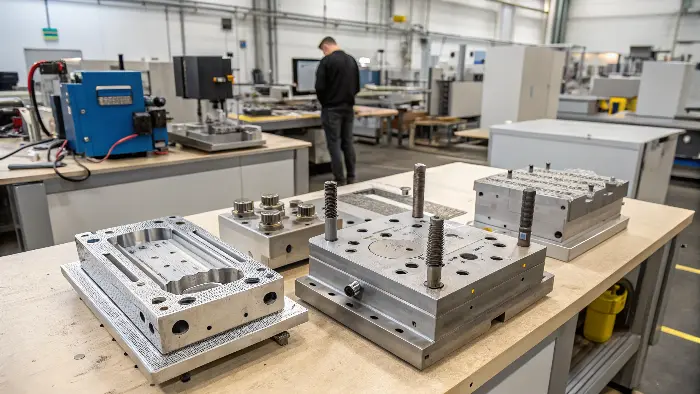
Mold design is a critical step. It happens before we even think about making the actual mold. I always tell my clients that the mold is the heart of the injection molding process. So, its design must be perfect. A mold designer, like my friend Jacky who works with product designs, thinks about many things. First, the part itself. How complex is its shape? What material will it be made from? This affects how the plastic will behave. Then, the designer plans the "gate." This is where the molten plastic enters the mold cavity. The location and size of the gate are very important. They affect how the cavity fills and the final quality of the part. Designers also plan "runners." These are channels that guide the plastic from the machine’s nozzle to the gate. We also need to think about cooling channels. These channels circulate water or oil to cool the mold quickly and evenly. If cooling is not even, the part can warp. Finally, we need an ejection system. This system pushes the finished part out of the mold. All these elements must work together perfectly. A good mold design ensures high-quality parts, a fast cycle time, and a long mold life. I’ve seen projects where a small mistake in mold design caused big headaches later. That’s why we at CKMOLD spend a lot of time getting it right.
Key Considerations in Mold Design:
| Feature | Importance |
|---|---|
| Part Geometry | Determines complexity, draft angles, and potential for undercuts. |
| Material Choice | Affects shrinkage, flow properties, and required mold materials. |
| Gating System | Influences filling pattern, weld lines, and cosmetic appearance. |
| Cooling System | Critical for cycle time, part quality, and preventing warpage. |
| Ejection System | Ensures easy and damage-free removal of the part from the mold. |
| Venting | Allows trapped air to escape, preventing short shots and burn marks. |
Thinking about these details early saves a lot of trouble and money.
How are molds made for injection molding?
You know a mold is needed, but how is this precise tool actually built? It seems like a complex, almost magical process. Let me show you the steps to create these essential tools.
Molds are usually made from steel or aluminum. We use precise machines like CNC mills and EDM to cut the metal. This creates the cavity that shapes the plastic part.
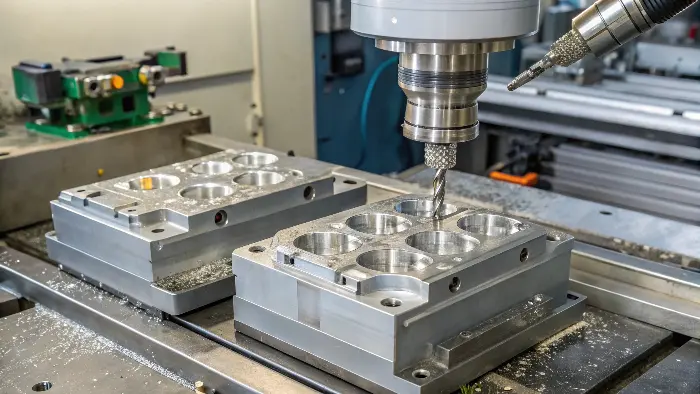
Making a mold is a highly skilled job. It requires precision and attention to detail. After the mold design is finalized and approved, we start making the mold. Most molds are made from high-quality steel. Steel is strong and can withstand the high pressures and temperatures of injection molding for a long time. Sometimes, for prototypes or short production runs, we might use aluminum. Aluminum is softer and easier to machine, so it’s faster and cheaper to make an aluminum mold. However, it doesn’t last as long as a steel mold. The main process for shaping the steel is CNC machining. CNC stands for Computer Numerical Control. These machines use computer programs to guide cutting tools very precisely. They can create very complex shapes in the steel blocks. For very fine details or sharp corners, we might use EDM, which means Electrical Discharge Machining. EDM uses electrical sparks to erode the metal. It’s like a very controlled way of burning away the steel to get the exact shape. After machining, the mold components are often heat-treated to make them harder and more durable. Then, skilled toolmakers polish the cavity surfaces. A smooth surface on the mold means a smooth surface on the plastic part. Finally, all the different parts of the mold are assembled. This includes the core, the cavity, the ejector pins, cooling channels, and everything else. It’s a bit like putting together a very complex puzzle. I remember visiting a mold factory for the first time when I was just starting out. I was amazed by the size of the machines and the skill of the workers. It inspired me to learn more.
Main Mold Making Steps:
- Design Review: Final check of the mold design.
- Material Selection: Choosing the right steel or aluminum.
- CNC Machining: Roughing and finishing the mold cavities and cores.
- EDM (if needed): Creating fine details or features difficult to machine.
- Heat Treatment: Hardening the mold components.
- Polishing: Achieving the desired surface finish on the mold cavities.
- Assembly & Fitting: Putting all mold components together and ensuring they fit perfectly.
- Trialing (T1): Testing the mold with actual plastic to check part quality.
This careful process ensures the mold will produce good parts for a long time. At CKMOLD, we oversee this meticulously.
What is the manufacturing process of injection molding?
You have a mold, but how does it actually make thousands of your products? The jump from a tool to mass production can seem unclear. Let’s walk through the steps of making parts with the mold.
The manufacturing process involves an injection molding machine. It melts plastic, injects it into the mold, cools it, and then ejects the finished part. This cycle repeats rapidly for mass production.
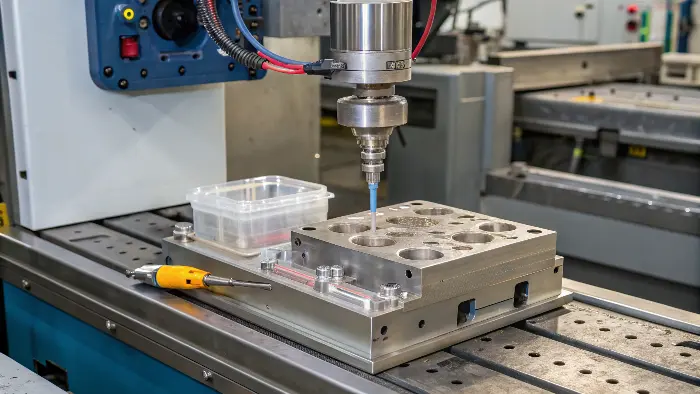
Once the mold is made and tested, we are ready for mass production. This happens on an injection molding machine. These machines are quite amazing. First, we mount the mold securely into the machine. The machine has two main parts: the injection unit and the clamping unit. The injection unit is like a big syringe. It takes plastic pellets from a hopper. Inside a heated barrel, a screw melts these pellets and moves the molten plastic towards the front. The clamping unit holds the two halves of the mold together with great force. This is important because the injection pressure is very high. If the mold is not clamped tightly, plastic could leak out. When everything is ready, the cycle begins.
- Mold Closing: The clamping unit closes the mold.
- Injection: The screw pushes forward, injecting the molten plastic into the mold cavity.
- Holding Pressure: Pressure is maintained for a short time to make sure the cavity is completely filled as the plastic starts to cool and shrink.
- Cooling: The plastic cools down inside the mold. Cooling channels in the mold help speed this up. This is often the longest part of the cycle.
- Mold Opening: The clamping unit opens the mold.
- Ejection: Ejector pins push the solidified part out of the mold. The part might fall onto a conveyor belt or be removed by a robot.
Then, the cycle starts all over again. This can happen very quickly, sometimes in just a few seconds, depending on the part size and complexity. I’ve spent many hours in factories watching these machines run. It’s impressive to see how consistently they produce identical parts, one after another. We monitor the process closely to ensure quality.
Key Parameters in Injection Molding:
| Parameter | Description | Impact on Part Quality |
|---|---|---|
| Melt Temperature | Temperature of the plastic as it’s injected. | Affects flow, fill, and material degradation. |
| Injection Pressure | Force used to push plastic into the mold. | Influences part density, dimensions, and flash. |
| Injection Speed | How fast the plastic is injected. | Affects fill pattern, weld lines, and surface finish. |
| Cooling Time | Duration the part stays in the mold to solidify. | Determines cycle time, part stability, and warpage. |
| Holding Pressure | Pressure applied after initial fill to compensate for shrinkage. | Affects part dimensions, sink marks, and voids. |
Controlling these parameters is key to making good parts consistently. We at CKMOLD have years of experience fine-tuning these for optimal results.
Conclusion
CKMOLD guides your product from idea to reality. We use expert mold design and precise injection molding. This ensures quality parts are made efficiently for your needs.
